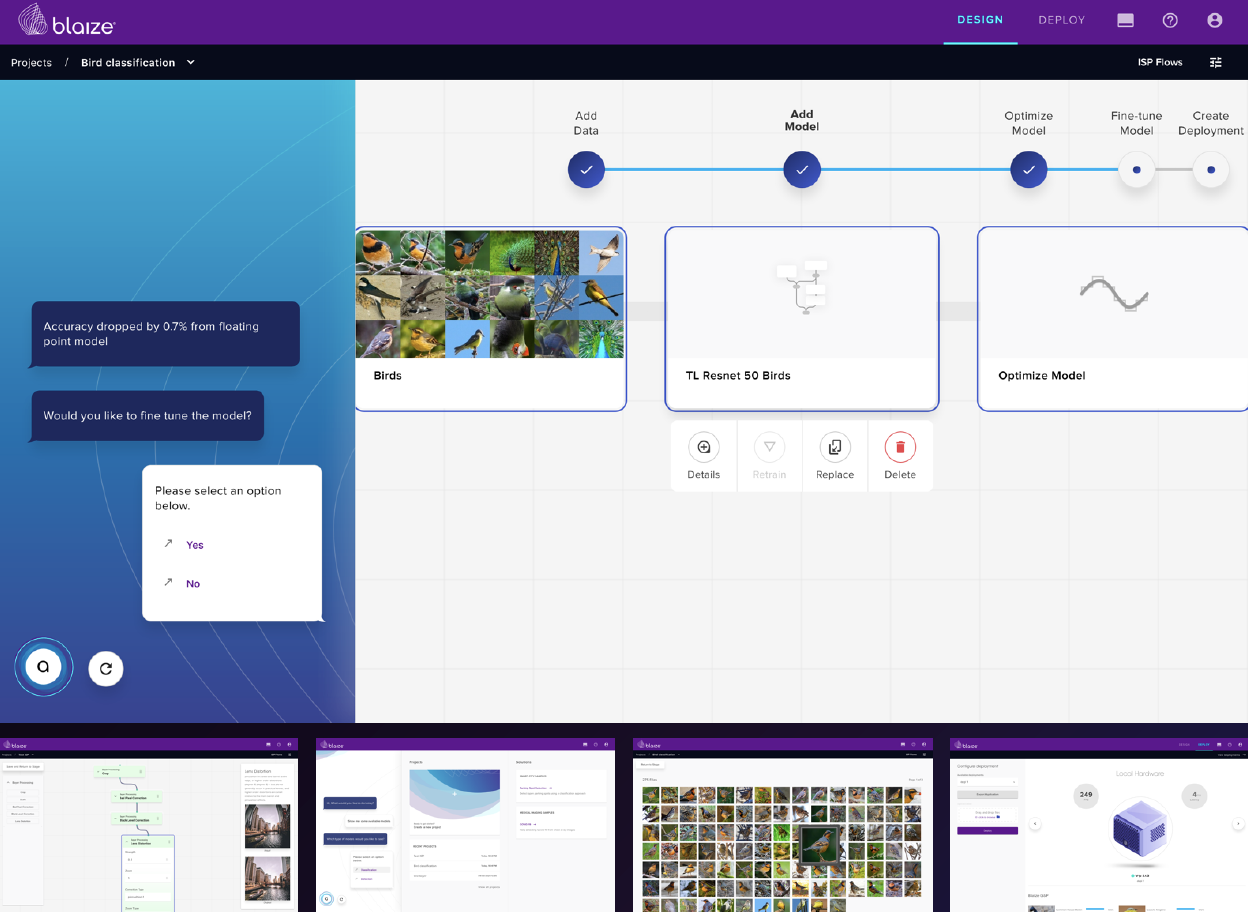Blaize, AI Chip Startup, Adds Edge Tool

As AI moves inexorably to the edge, placing machine learning models closer to where data is generated, more tools are emerging to enable ML operations needed for AI-based application development. Some are code-free software platforms that allow developers to drag-and-drop when deploying AI apps.
Google led the way in 2018 with its AutoML service. Others are following with open-source versions, including AI developer Blaize Inc., which targets its AI computing platform at enterprise, automotive and “smart vision” market sectors. On Thursday (Dec. 10), Blaize launched its AI Studio, billed as a no-code development platform aimed at edge AI operational workflows.
The gap-filling platform complements the startup’s graphic streaming processor released last year.
As enterprises struggle to deploy machine learning models, startups like Blaize seek to expand the MLOps ecosystem seeded by Google and others with open-source tools designed to accelerate deployment of edge applications. AI Studio’s no-code approach is billed as making it easier for “domain expert non-developers” to build and deploy edge AI apps.
The MLOps platform includes a code-free visual interface aimed not only at AI data scientists but also domain experts moving up the learning curve for deploying AI edge applications. The MLOps and DevOps workflows connect with open development languages such as Python and the OpenVX platform for developing computer vision applications.
A workload processing component handles both AI and non-AI jobs on the same chip. The AI edge platform also includes libraries and pre-built models; the edge DevOps component supports application containers as well as federated learning frameworks. The latter is used to train ML models using diverse data sets.
The company’s mantra is: “Uncode AI [equals] uncomplicate AI.”
“What we are really seeing is the generalized approach to low code/no code has been very popular,” Dmitry Zakharchenko, Blaize’s vice president of research and product development, said during an introductory briefing on Studio AI.
“We’ve chosen a path where if we [target] the specific challenges of the edge, we would be able to achieve a very different level of product specificity. That will be a lot more usable to people actually developing production applications,” said Zakharchenko.
Based on earlier work with its AI hardware customers, “We recognized the need and opportunity for a new class of AI software platform to address the complete end-to-end edge AI operational workflow,” added Dinakar Munagala, Blaize co-founder and CEO.
Blaize is currently previewing AI Studio with early-adopter customers. The no-code platform will be generally available during the first quarter of 2021.
Based in El Dorado Hills, Calif., the startup also has grabbed analysts’ attention with its Blaize Graph Streaming Processor (GSP), which it unveiled in January. The graph-native platform incorporates 16 cores, delivering 16 TOPS of AI inference horsepower.
Founded by former Intel Corp. engineers as Thinci in 2010, Blaize emerged from stealth mode last year. Over the last year it has provided select customers access to its GSP chip set.
Blaize recently announced a $87 million funding round that included Denso, Temasek, Daimler and Samsung Catalyst among others.
“The general applicability of the GSP across applications including both AI and non-AI tasks gives Blaize a unique position in the market and puts them head-to-head with Intel and Nvidia,” market tracker Omdia concluded in a research note. The startup’s AI strategy focuses on vision applications at the edge, including automotive, industrial monitoring and retail applications.
“There’s a huge gap hindering AI edge deployment,” said Aditya Kaul, an Omdia analyst, including workload processing and a “lack of a comprehensive edge software development platform and edge DevOps.”
Other industry analysts note that AI hardware competitors combining CPU accelerators with graphics processors to accelerate model training and inference at the edge are ultimately locked in a software struggle. “The war gets fought in software,” notes Addison Snell, CEO of Intersect360 Research.
Related
George Leopold has written about science and technology for more than 30 years, focusing on electronics and aerospace technology. He previously served as executive editor of Electronic Engineering Times. Leopold is the author of "Calculated Risk: The Supersonic Life and Times of Gus Grissom" (Purdue University Press, 2016).











